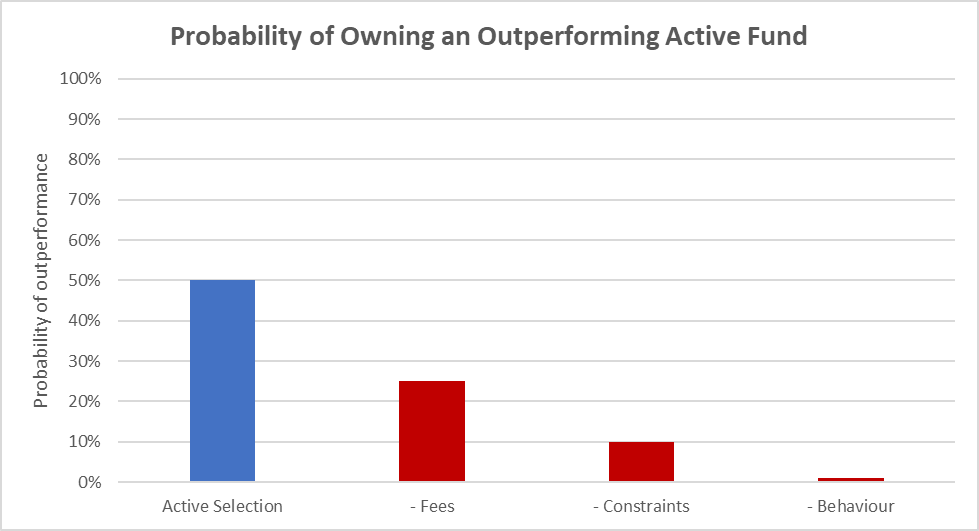Much of the focus on the dramatic and unprecedented sell-off in gilt markets this week has been centred on the technical factors that led to an intervention from the Bank of England, potentially worth £65bn. Whilst the tribulations of the Liability Driven Investment strategies used by pension schemes are both fascinating and concerning, these periods of extreme stress are not just about the technicalities – they also provide acute behavioural lessons:
Small sparks can lead to great damage in complex systems:
The catalyst for the dramatic rise in gilt yields was the new leadership’s ‘mini-budget’. Which precise part of Kwarteng’s proposal led investors in UK assets to panic? The removal of the highest rate of tax, the unfunded nature of the proposals or the lack of independent oversight from the Office for Budgetary Responsibility? Everything and nothing. It doesn’t matter. In deeply complex, interconnected systems small sparks can precipitate dramatic and destructive feedback loops.
Markets are about the behaviour of other investors:
Financial markets are about the decisions made by other people. Most investors do not assess new information about an asset based on how it impacts its cash flows and valuation, but how we believe other investors will respond to that same information. This creates vicious and virtuous circles. In periods of severe turbulence this feature of markets is taken to the extreme. Our decisions become driven by the fear and cost of being the wrong side of momentum shifts. We want to be in the herd during the stampede, not underneath it.
Predicting when things will happen is close to impossible:
The fact that complex systems can be compromised by small events doesn’t simply make them riskier than we might normally perceive. It makes them even more difficult to forecast than we realise. Even if a system has inherent fragilities, anticipating when these will be exposed (if ever) is an incredibly difficult, perhaps impossible, task. Investors should never try to predict when things will happen.
Both financial and mental models can break under stress:
It is inevitable that the scale and speed of the rise in gilt yields would have torn asunder many ‘worst case’ assumptions that have been made in financial models. Whether it be the stress tests or scenarios used to judge the appropriate collateral buffers in an LDI strategy or the predicted drawdown in cautious (but duration heavy) portfolios, some models will have been found wanting. This is to be expected – models are an abstraction, a simplified version of something too chaotic to replicate. Not only that, but the output of financial models is inexorably shaped by what has happened before. In a complex system, things tend to break in the future in a different way to how they broke in the past.
It is not just the limitations of financial models that leave us vulnerable, but the mental models that investors use. Inescapably, the mental models we apply to inform our investment decision making are framed by what we have experienced. For most that means years of tranquil market conditions, moribund inflation, and interest rates at close to zero. When the environment shifts it can leave us incredibly exposed.
Short-term performance chasing sows the seeds of future pain:
One of the major casualties of the remarkable increase in yields has been defensive or cautious funds, some of which are nursing losses of more than 20% across the year. Many of these strategies have used a heavy allocation to long duration bonds to provide a ‘low volatility’ return stream and diversification alongside the growth assets held in a portfolio.
It is easy to now be critical of the unappealing ‘return free risk’ of owning long duration bonds with very low return prospects, but it is important to remember the context. Holding such assets had worked well for years (decades). Investors who came to find the combination of close to zero returns and (potentially) severe volatility unappealing likely found themselves underperforming their peers and benchmark. The more pressure investors feel about poor short-term performance – ‘being underweight duration led to underperformance again this quarter’ – the greater the temptation is to fold. Unfortunately, there is often a choice between keeping to our long-term investment principles or keeping our job and assets. We cannot always do both.
Market shocks leave scars:
The type of market shock we have witnessed in the past week will undoubtedly leave scars. Not simply in terms of unrealised and realised losses, but future behaviour. What will the consequences be? Changes to collateral buffer requirements for LDI strategies seems obvious (we have a new scenario to use in the risk model). What about cautious and defensive portfolios – are long duration assets now less palatable? (Ironically, they are far more attractive now than they have been in recent years). Will it now be more acceptable to hold high cash levels in a portfolio? The trend towards global bond and equity exposure at the expense of a domestic (UK) bias will almost certainly gain even further momentum.
The memories and consequences of stressful events unavoidably shape our future behaviour. Some changes will be an irrational reaction to an idiosyncratic occurrence, others might be more sensible. Some behaviour shifts will fade, others will prove long lasting.
Our model for how things work has changed, and it will change again.
—
I have a book coming out! The Intelligent Fund Investor explores the beliefs and behaviours that lead investors astray, and shows how we can make better decisions. You can find out more here.
